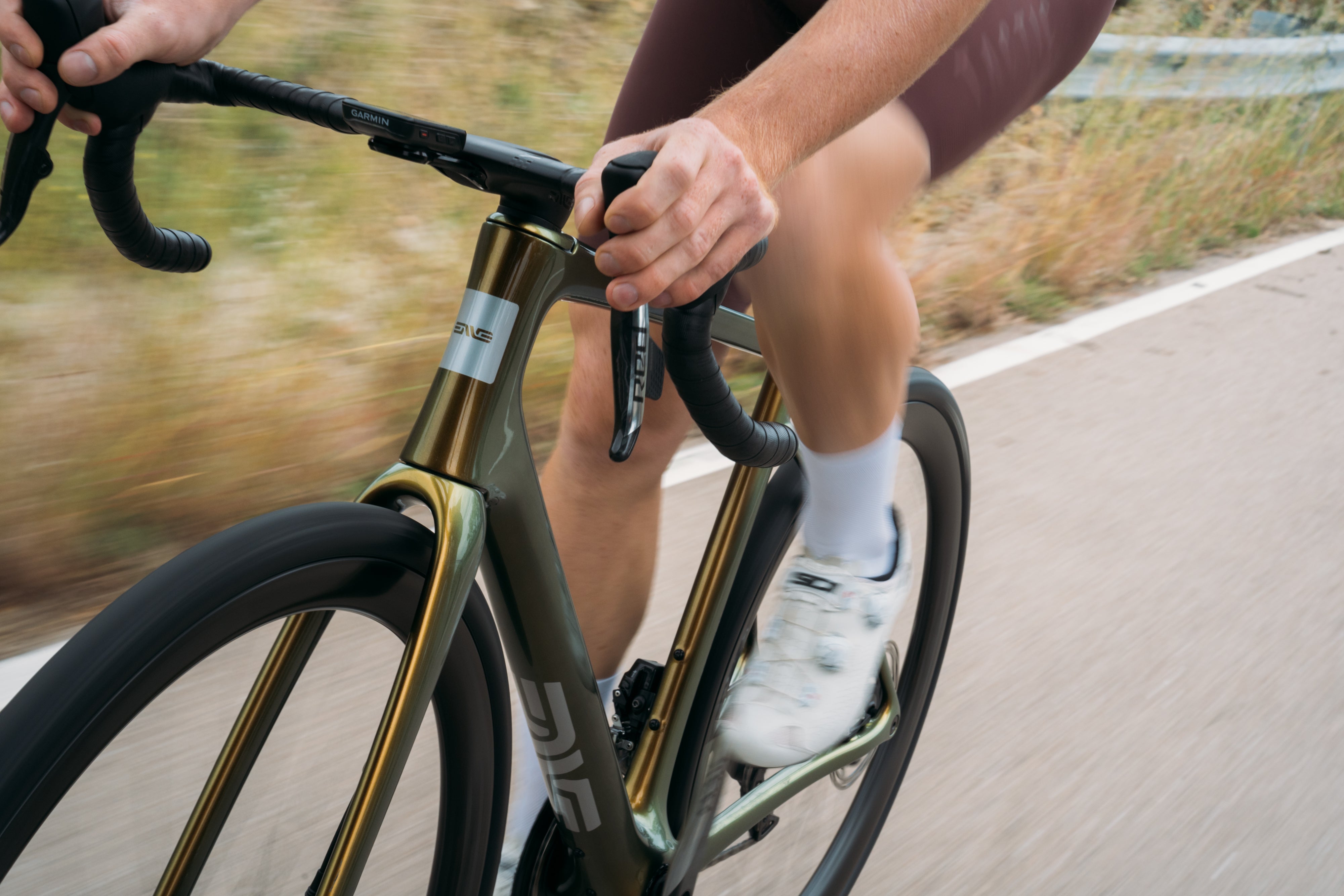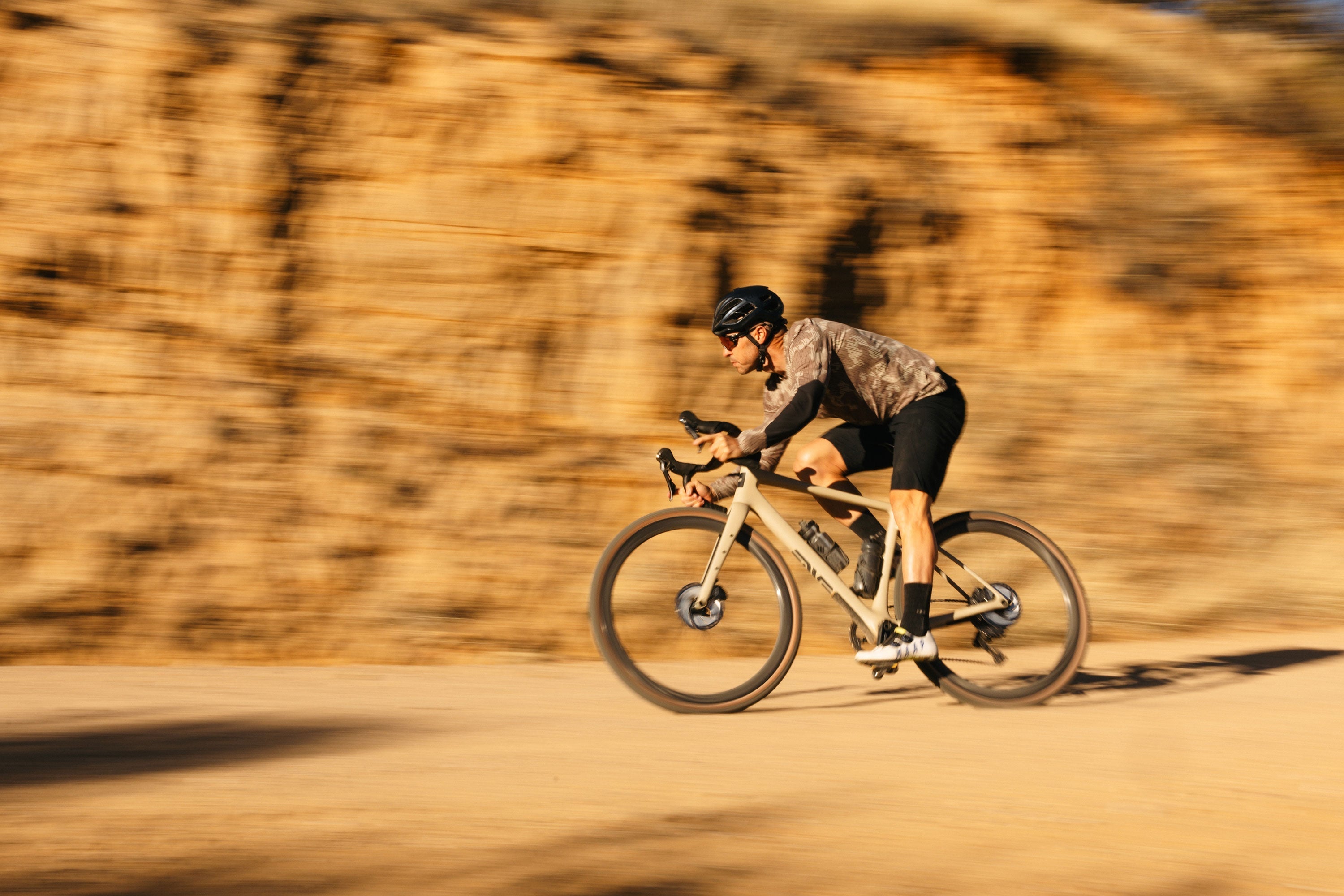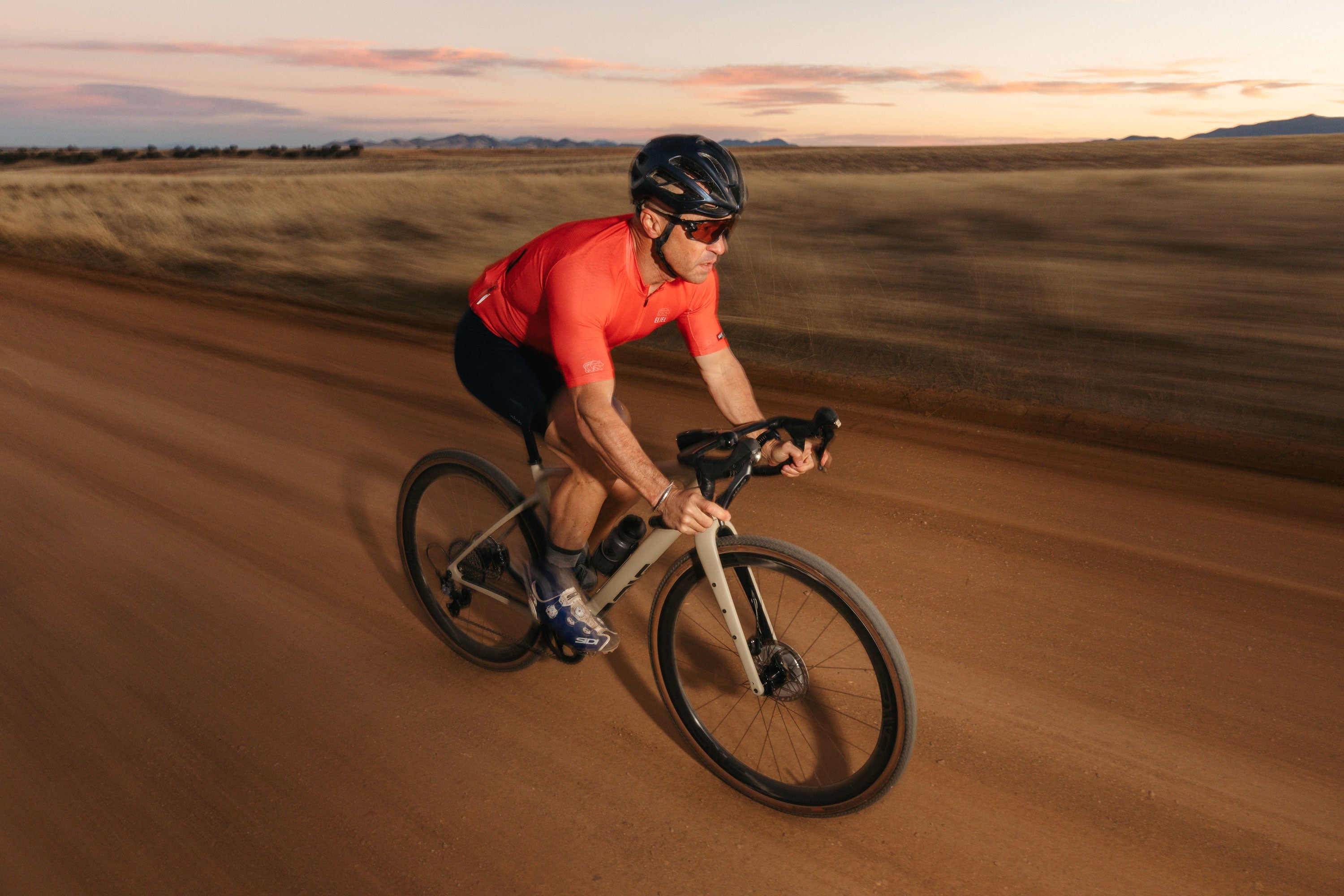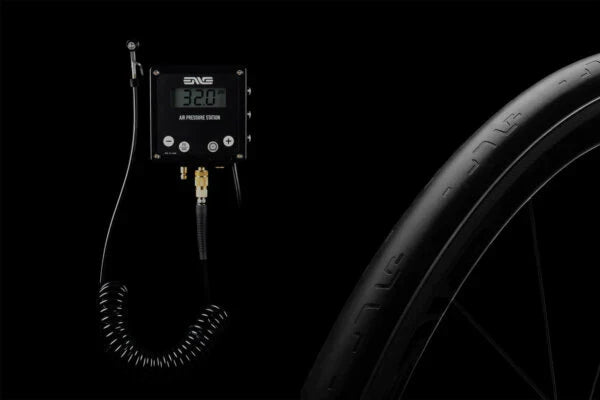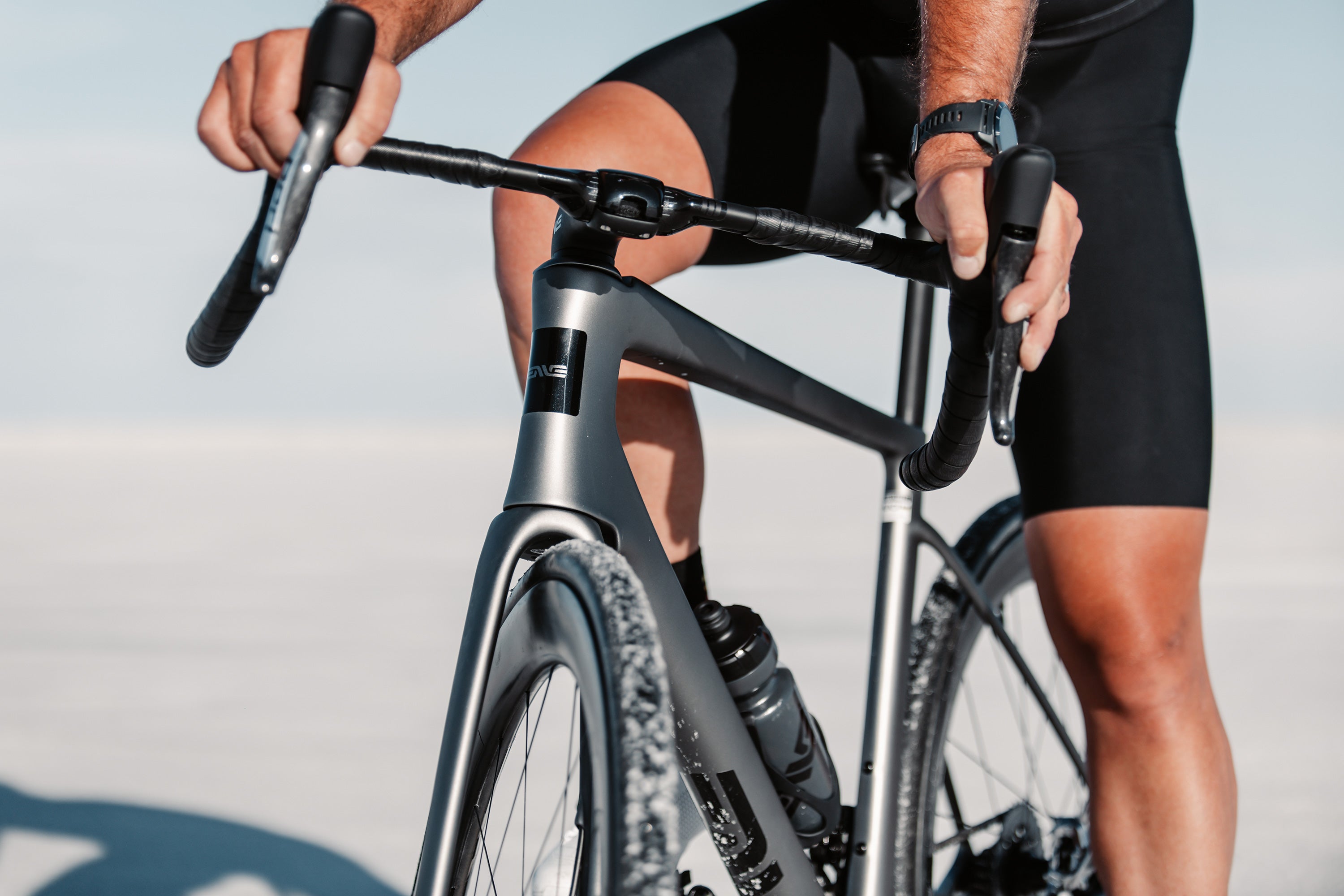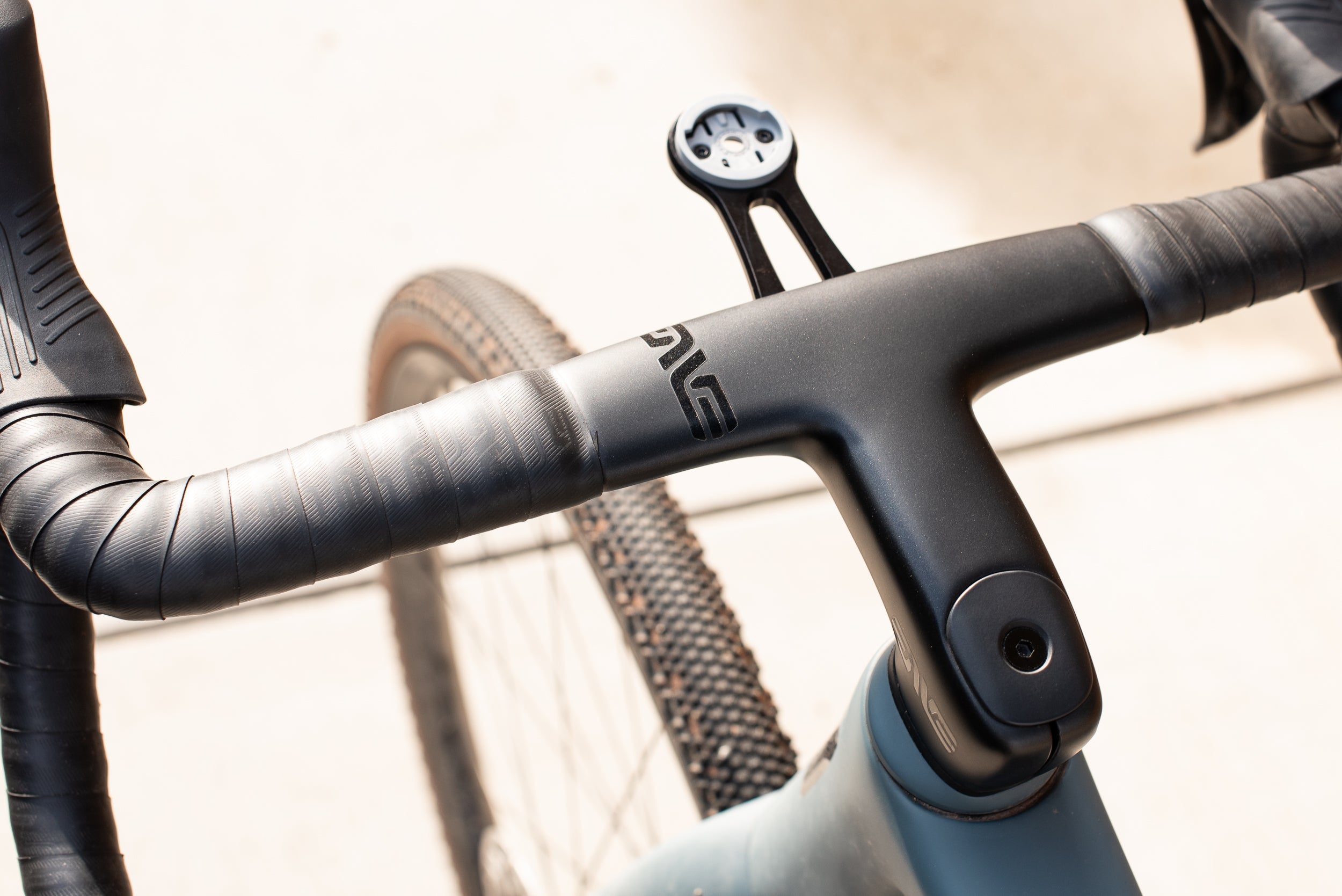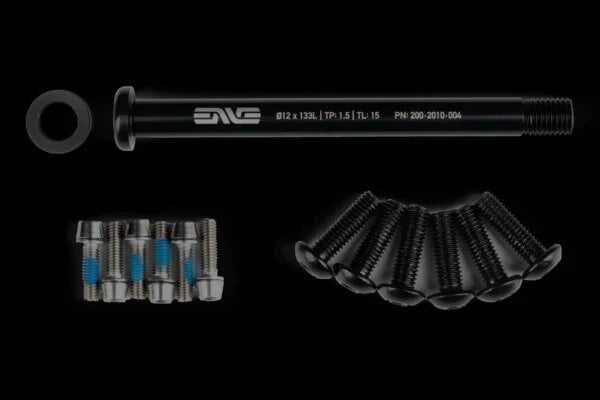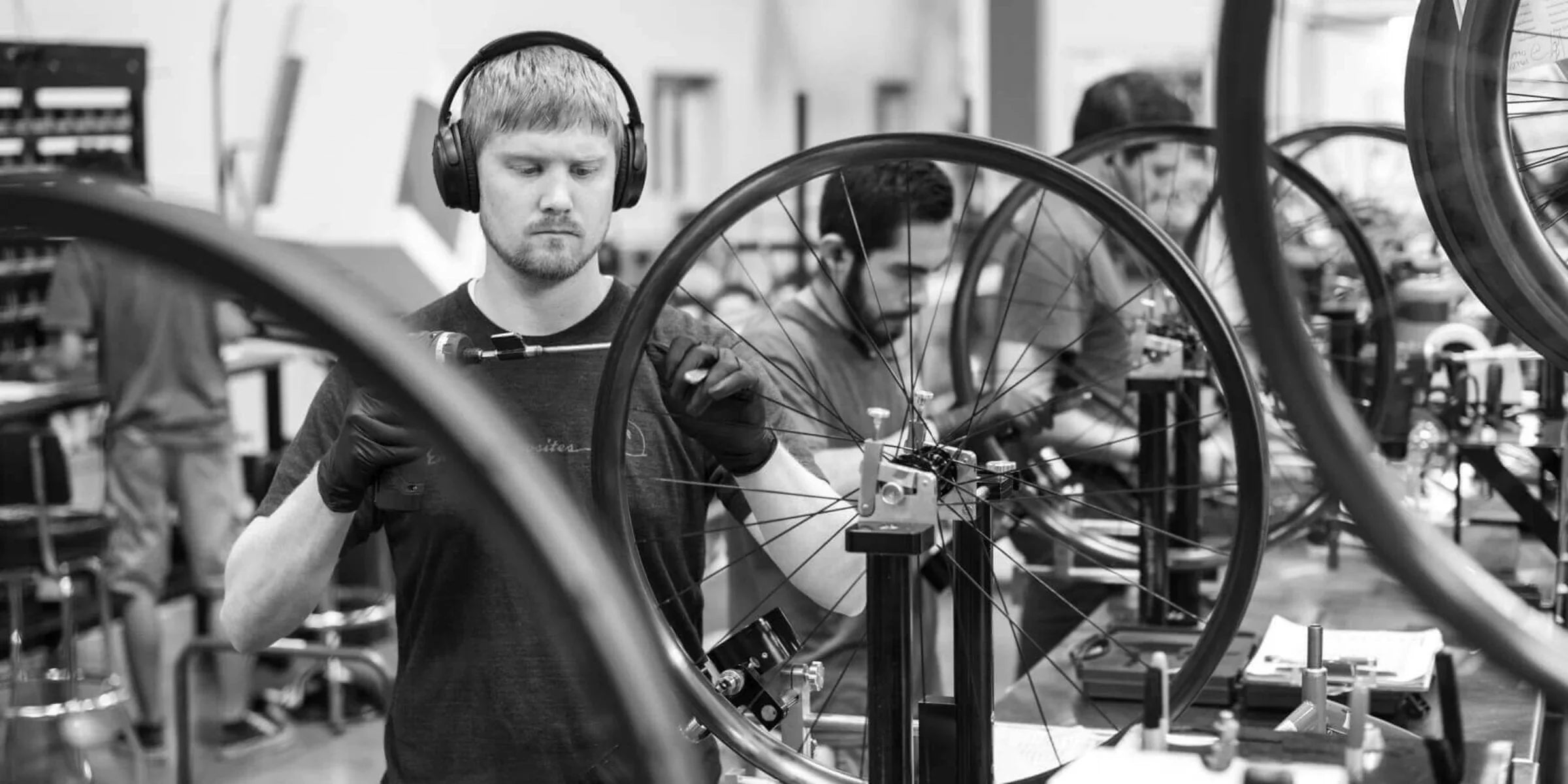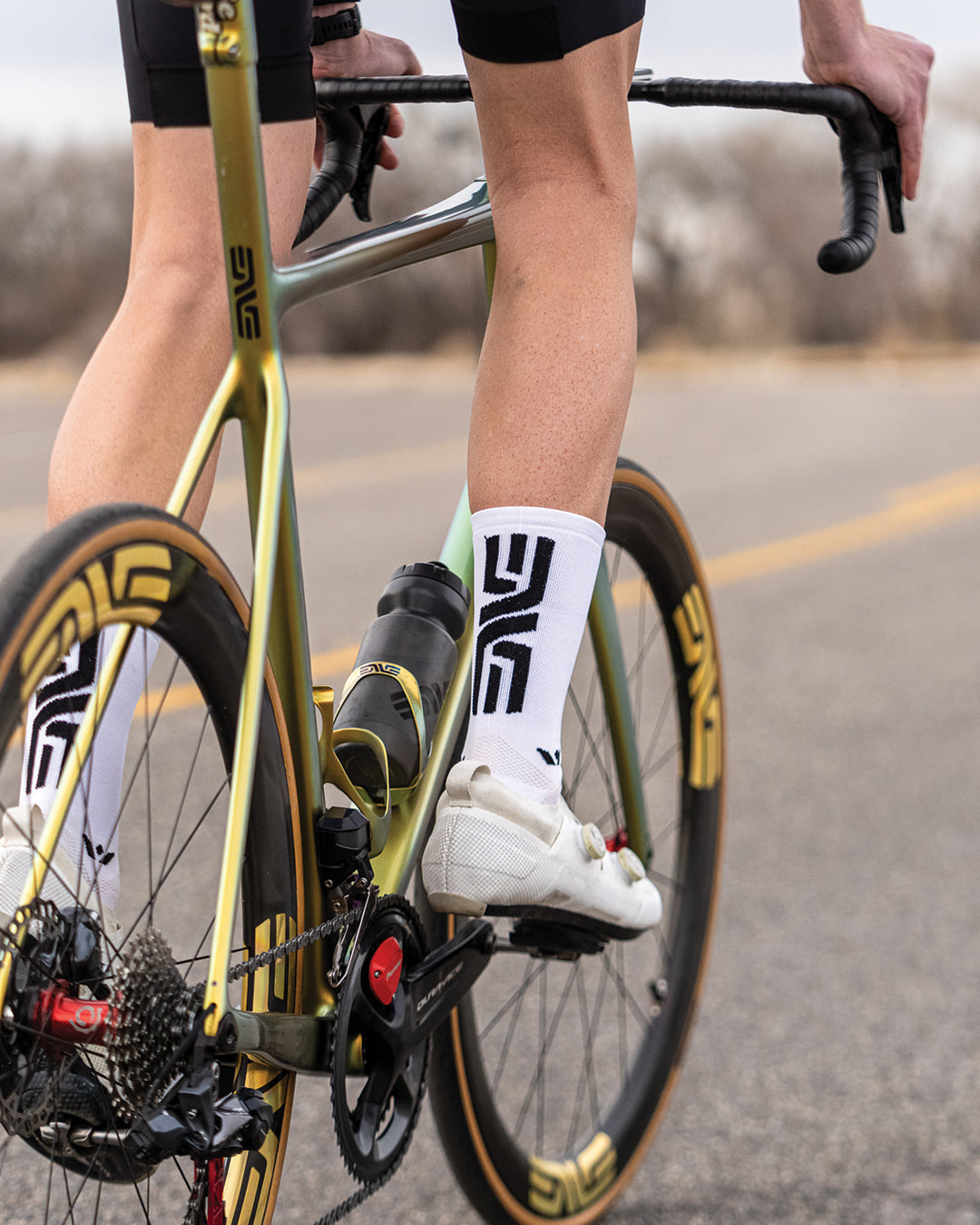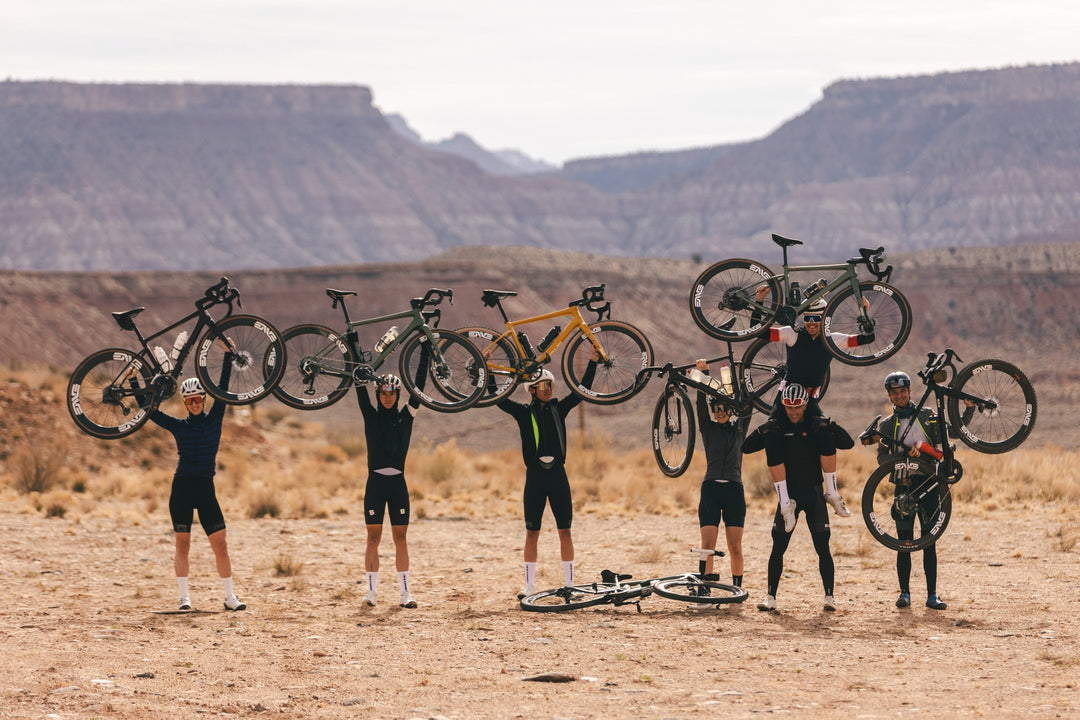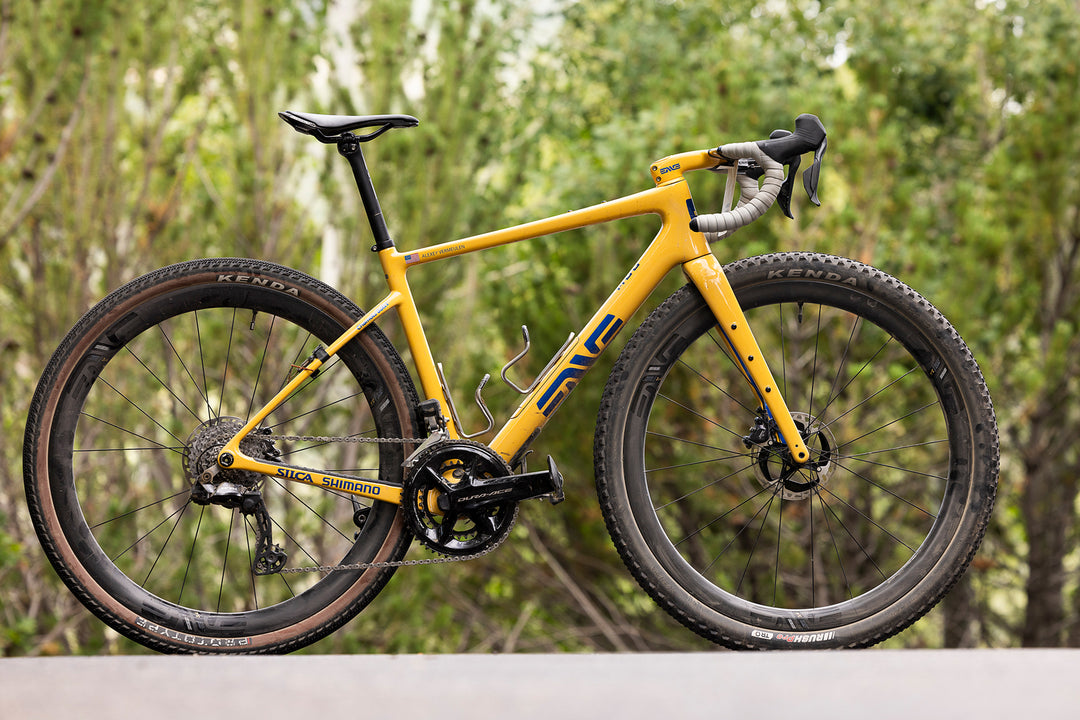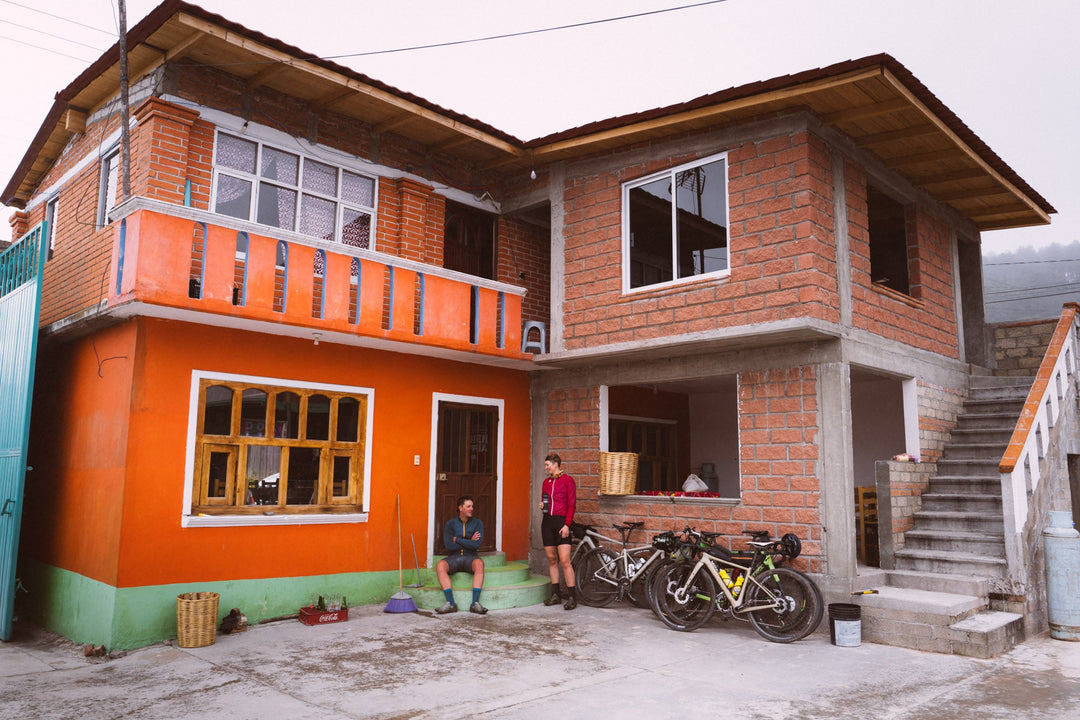Pinch Flats,
The Ultimate Buzzkill
You’re in the zone, finding flow, tuned out but completely tuned in to your ride… Then bam, rim and rock collide, slicing through rubber enroute to their union, leaving both you and your tire deflated on the side of the trail.

This notorious type of flat tire is known as a pinch-flat or snake-bite, and it occurs when your wheel hits something with enough force that the pressure of the air in your tire is overcome and the edge of the rim slices through the tread and/or bead of the tire creating not one but two holes in your tire. Since the birth of mountain biking, the pinch-flat has plagued our sport.

It’s a little odd that, given the massive developments in mountain biking over the last 20 years, the problem still exists. You’d think that if the industry can make enduro bikes that can be ridden uphill and carbon wheels that can be raced downhill, then pinch flats would be relatively easy to solve. However, as we’ll see, it’s exactly the rapid development of our sport that has meant the plague has kept returning and also why we think it has finally met its match.
THE TUBELESS REVOLUTION
Not too long ago, a pinch-flat was defined by pinching an inner-tube inside the tire. In the late 90s tubeless mountain bike wheel and tire technology was introduced to the market and by the mid 2000s the technology had relegated inner-tubes to the role of life savers, only to be deployed in times of trail-side emergencies. Tubeless technology brought real performance to the mountain bike experience and all but eliminated pinch-flats and punctures if a tire sealant was used.
Tubeless resolved pinch flatting in the early 2000s for a couple of reasons: one, rims were nearly all aluminum, which is a relatively soft material; and two, tubeless tires were then heavy and robust. Alloy rims tended to dent and bend easily, which meant that heavy tubeless tires were generally left unscathed while the rim suffered deformation and frequently lost the ability to maintain a reliable seal.

In the same period, 29-inch wheels arrived but were slow to catch on. While the 29er platform rolled over obstacles with greater ease, it came at the cost of weight, limited tire and rim options, and generally insufficient strength and stiffness, all resulting in mediocre ride quality.
THE HOOKLESS REVOLUTION
In the late 2000s we at ENVE challenged ourselves to make an everyday rideable carbon rim. By 2010 ENVE had proven that carbon is not only viable for mountain biking, but that it’s the ultimate material for mountain bike wheels because of its low weight, high strength and stiffness.

In the first decade of the 21st century, the performance standard switched from tubes to tubeless, alloy to carbon, and 26 to 29” wheels. For a time the cancer of pinch-flatting seemed to be in permanent remission.
However, as riders continued to push the boundaries, the limitations of the wheel and tire systems began to show. Riders and manufacturers who disliked the weight and ride of UST rated tubeless tires began experimenting with lighter tires and sealant. As carbon rim manufacturers, we invested heavily in improving the tubeless system. We developed and introduced hookless designs with the M Series which eliminated unpredictable losses of air from the tire caused by hard compression or cornering, breaking the tire’s seal and allowing air to ‘burp’ from the tire. At the same time, we were attempting to make the strongest and stiffest wheels available. Since Boost spacing wasn’t yet available, making a really stiff rim helped compensate for the lack of optimized frame and wheel build geometry, especially in larger wheel diameters. However, the side effect was a rigid leading edge that wreaked havoc on tires. Just like that, the pinch-flat epidemic returned with a vengeance but this time no tubes were involved, only tires.
INSERTS AND OTHER COMPROMISES
In recent years, manufacturers and hard-charging mountain bikers found ways to avoid pinch-flats; heavier constructions reduced tire damage and riders ran them at cautiously higher pressures, compromising ride quality to stymie the epidemic. In addition, a rash of products best grouped together as ‘tire inserts’, which range from simple to complex, cheap DIY to engineered and relatively expensive have arrived on the scene. These inserts all exist to do two things: prevent pinch flats and protect rims from damage.

While their existence is commendable, the idea of adding 80-300 grams of rotational weight to a carbon rim that has been painstakingly engineered to save every last gram is a tough pill to swallow for anyone seeking the best possible ride performance.
However, we understand that, for many, it’s worth the compromised ride quality just to have the peace of mind that your race entry, kitchen pass, and shot at the podium won’t be wasted while you sit on the side of the trail trying to repair a flat tire.
COUNTING THE COST
To give you an idea of just how big of a problem flatting is, a recent article published on Pinkbike shed light on the cost of flatting. It blamed the epidemic for lost races, wasted money, and compromised racing careers. The author’s closing statement is, “Maybe somebody can finally solve this (flat tire problem) once and for all and we can all ride bikes more.”
This is really what it comes down to – ride time. If you’re like most of us at ENVE, time on the bike is precious. We’re cyclists on a quest to find that elusive work/life/ride balance so every ride must count. We want each ride to be the best ride yet. Worrying about equipment failure, flat tires, bringing spare tubes, pump/inflator, etc… all hampers the experience. We just want to ride how, where, and what we want with perfect confidence in our equipment.
Anecdotally, I got the hall pass for an early morning ride a few weeks ago before I departed for the Eurobike trade show. I couldn’t have been more excited to get one last ride in before I boarded a plane for the motherland. Due to some recent ride testing we’d been performing, my bike was equipped with a pair of non-ENVE carbon wheels. In the previous weeks I’d been riding the latest M Series with its new anti-flat technology. My two-hour ride was cut short when after just 15 minutes I entered my favorite rock garden the way I had been doing on the new M Series for weeks only to exit in a shower of tire sealant and hissing air. The tire was ruined, my shorts were spattered with latex sealant, and time I would have rather spent riding was wasted at the side of the trail. To rub salt in the wound, for the remainder of the ride I had to use an inner-tube with an unpleasantly high pressure that really diminished the riding experience and my bike’s performance. Who has the time and appetite for that? Not me.
COLLATERAL DAMAGE
Pinch-flatting can also cause considerable collateral damage. At ENVE, the majority of cracked, chipped, dented, and broken rims come shortly after a rider has flatted leaving nothing but the rubber itself to protect the rim from the ground. It is in this time between flatting and coming to a stop that the majority of ENVE carbon rims are broken or damaged. While ENVE’s Lifetime Protection Plan covers all types of ride-induced impact damage, going through the warranty process means time off the bike in most cases. It’s your back-up, not the cure to the problem.


THE ENVE WAY FORWARD
So how best to fight the pinch-flat? If you’re willing to compromise your ride experience, you can run higher tire pressures, install heavy-duty tires, add some sort of anti-flat insert, or simply ride slow and careful. None of those sounds fun to us.

At ENVE we don’t believe in compromise. We want it all: light and strong, stiff yet comfortable, and on top of that we want pinch-flat resistance as well. For this reason, we’ve spent the last two years investing in a complete redesign of the M Series line of full carbon mountain bike wheels. The new M Series features two innovative technologies: one, the Wide Hookless Bead, greatly reduces the propensity for pinch-flats for trail riders and cross country riders; the other, our Protective Rim Strip, completely eliminates pinch-flats for gravity applications where they are most prevalent.

For true confidence, real options, and a ride without limitations.


